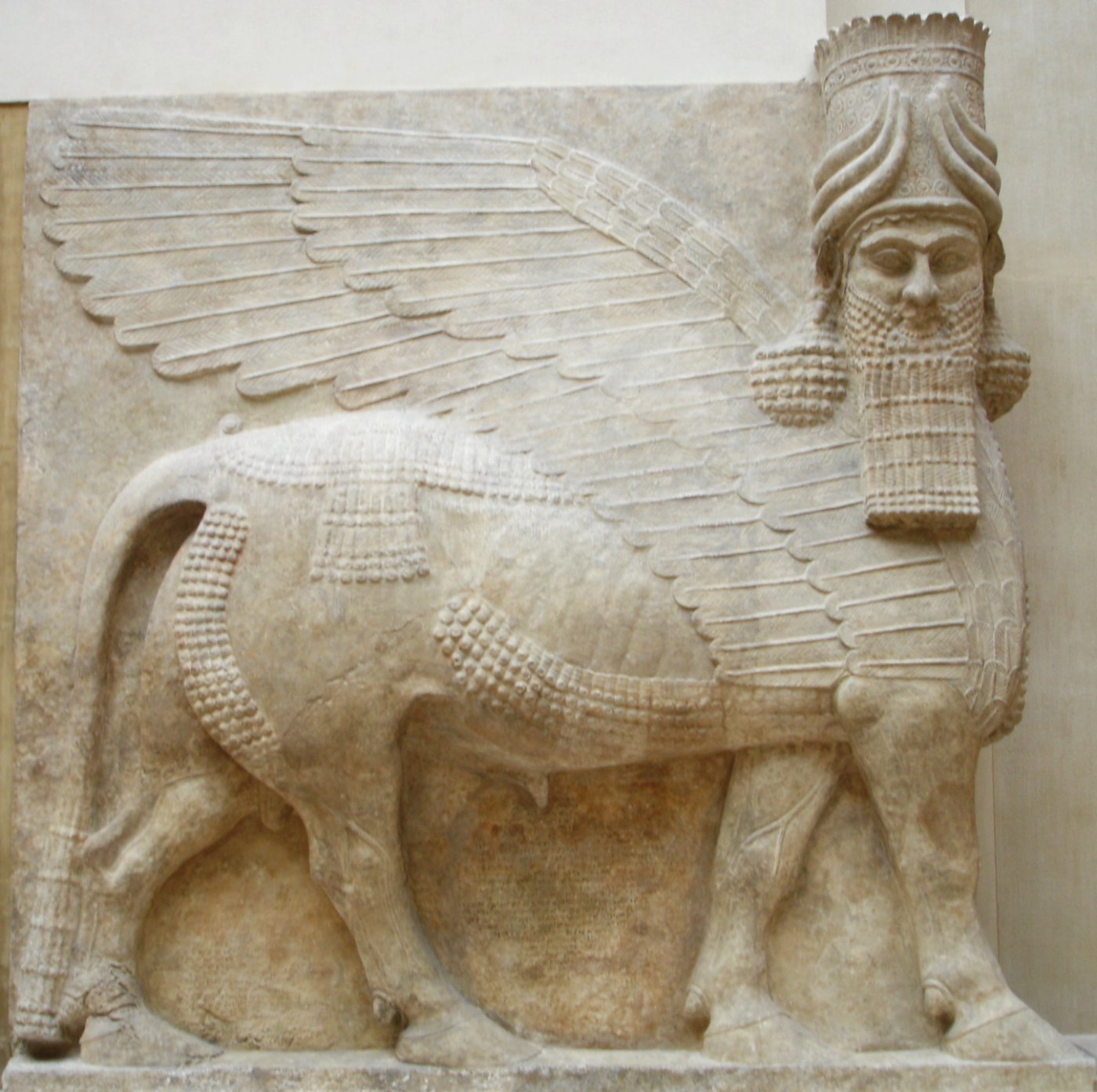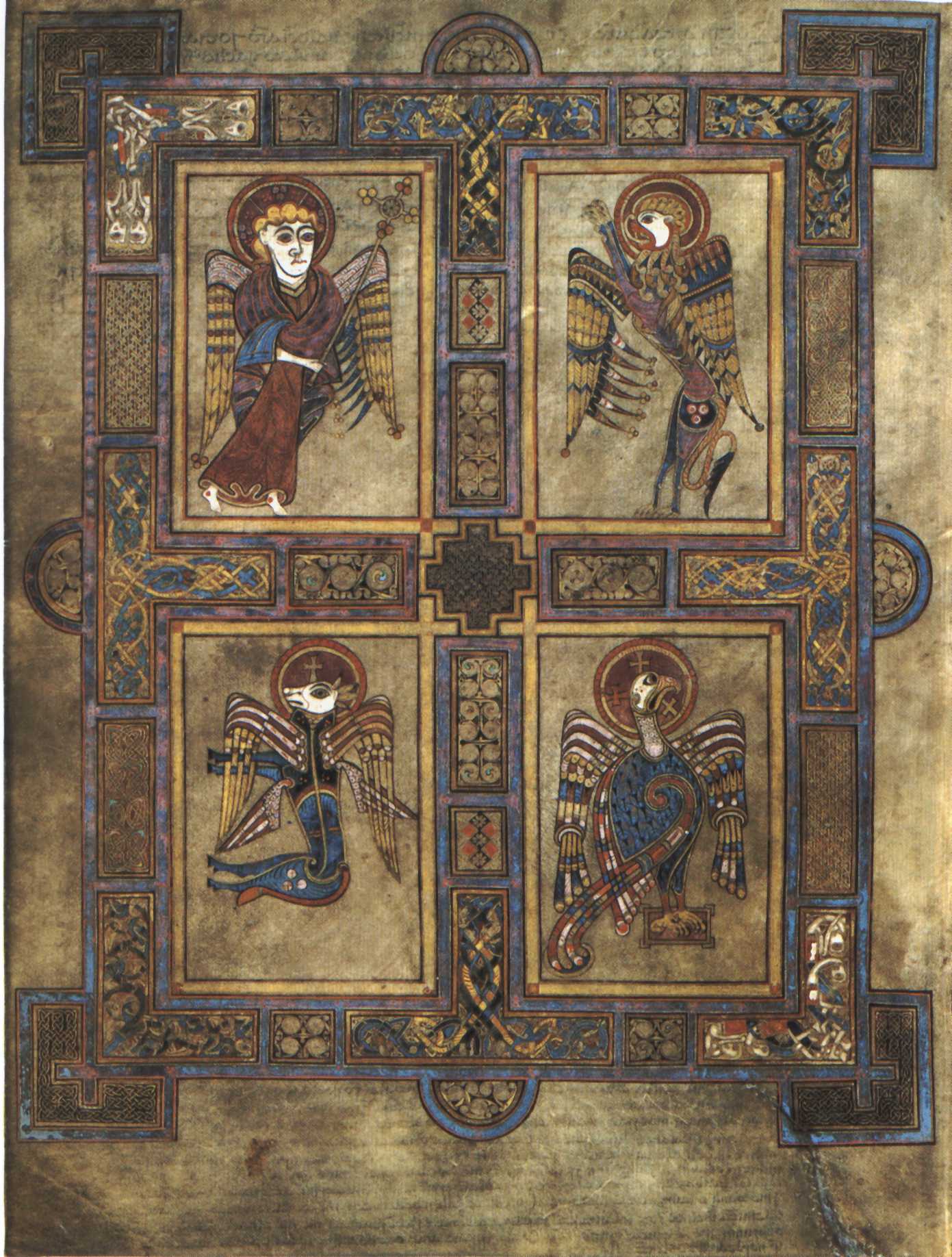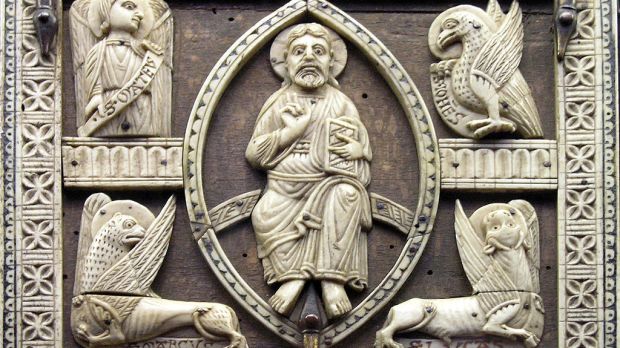One of the most common motifs of Christian art is the almost omnipresent Tetramorph. From the Greek tetra, four; and morphé, form, the word applies to any representation of a set of four elements; literally, any image that encompasses four forms. Specifically in Christian art, this is the most common way to depict the four Evangelists, each one of them either accompanied or represented by a figure, three of them being animals and only one — the one that accompanies or represents Matthew — human or, more often than not, angelic.
Such images, unlike some other traditional motifs of Christian art — the Pelican, for example — do indeed have biblical bases. At the very least, two do. The first of these corresponds to the vision of the so-called “four living beings” of Ezekiel: the prophet describes four beings, and “they four had the face of a man, and the face of a lion, on the right side: and they four had the face of an ox on the left side; they four also had the face of an eagle” (Ezekiel 1, 10). One only wonders where Ezekiel got such complex images.

But we all know the combination of different beings and symbols was quite common in ancient Egypt, as well as in ancient Mesopotamia. Here, remembering the Egyptian sphinxes, winged Babylonian bulls and Greek harpies might come in handy since Ezekiel, in fact, was one of the Jewish prophets who lived the exile in Babylon around the sixth century before Christ, so his vision could have been influenced — Bible scholars claim — by the ancient motifs of Assyrian art, in which these combinations were indeed quite common.
Moreover, it is known — thanks to archaeology, paleography and other pertinent sciences — that these creatures correspond to the four fixed signs of the Babylonian zodiac: the ox represents Taurus; the lion, obviously, Leo; Scorpio, the eagle and the winged man (or the angel), to the constellation of Aquarius. Primitive Christians then adopted these symbols, assigning them to the four evangelists, from the 5th century on, completely changing their meaning.
The other biblical basis for this representation is to be found in the Revelation of John (that is, in the Apocalypse), chapter 4, verse 7: “And the first beast was as a lion, the second beast as a calf, the third beast had the face of a man, and the fourth beast was like an eagle.”

Now, why do we assign a specific creature to each Evangelist, instead of any other? Why do we assign the eagle to John, for instance? There are compelling and convincing reasons, associated with the particularities of the Gospels of each author, according to St. Jerome.
- Matthew is associated with the winged man — or the angel — because his Gospel focuses on the humanity of Christ, Saint Jerome affirms. In fact, it is Matthew who includes the narrative about the genealogy of Jesus.
- The lion is related to St. Mark because his Gospel emphasizes the majesty of Christ and his royal dignity, just as the lion has traditionally been regarded as the king of beasts. Mark’s Gospel begins with the prophetic voice of John the Baptist, crying out in the wilderness like a lion’s roar.
- Luke gets the ox, because his gospel focuses on the sacrificial character of Christ’s death, and the ox has always been a sacrificial animal par excellence, both for Judaism and Roman paganism. In Luke’s depiction of the Nativity, the ox, with the donkey, bears witness to the birth of the Messiah.
- John, finally, is associated with the eagle for two reasons: first, because his Gospel describes the Incarnation of the divine Logos, and the eagle is a symbol of that which comes from above. The second, because like the eagle, John — in his Revelation — was able to see beyond what is immediately present. They don’t call St. John the Evangelist “the Eagle of Patmos” for nothing!

